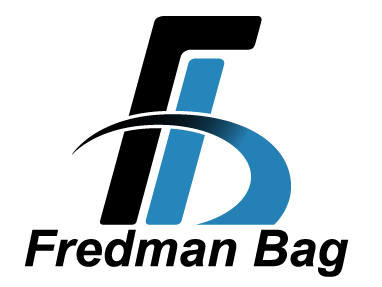Flexibles Offer a Good Sustainability Option
At Fredman Bag, focused actions drive our sustainability program, as we recognize and accept our responsibility to be a good steward of the environment. We strive to implement practices that provide for today’s needs without compromising the ability of future generations to fulfill their own needs. And we encourage our customers to pursue sustainability efforts too, such as through our sustainable material options or collaboration for reuse of items like wickets or cores.
For customers looking to take a step forward in their sustainability journey, we at Fredman Bag suggest considering a switch from rigid packaging to flexible packaging, when possible and appropriate. When compared to rigid formats, flexible packaging often offers a reduction in carbon, lowered energy consumption, a better product to packaging ratio, and less waste.
The carbon footprint of a packaging system contains the amount of carbon dioxide and other greenhouse gases emitted during the system’s life cycle. Flexible packaging many times requires less transportation and storage space than other packaging options, reducing fuel consumption and carbon dioxide emissions. In fact, flexible packaging produces one-tenth of the amount of carbon dioxide emissions as metal cans, and one truckload of flat pouches is equal to 15-25 truckloads of empty rigid containers.
A smaller carbon footprint equates to reduced energy consumption, with fewer pallets and trucks required. Plus, flexible packaging typically uses fewer resources, such as water and fossil fuels, during the production process. Overall, flexible packaging requires less material in many situations: 100 pounds of beverage can be packed in 2.5 pounds of flexible packaging material, but the same volume requires 84 pounds of glass.
Less resource consumption is ultimately the result of a higher product-to-package ratio offered by flexible packaging. This packaging efficiency is due to materials that are thinner and lighter than those of rigid packaging formats. A flexible pouch, for instance, can deliver the same amount of product as a plastic container, but with half the amount of packaging material.
At the end of its life cycle, if flexible packaging winds up in a landfill, it requires less space for disposal than other packaging options. Waste is also often decreased by the longer shelf life provided by this packaging solution, especially when used for food products.
And although some flexible packaging cannot be recycled right now (as its materials cannot be separated), developments in layers made from recyclable polyethylene material are promising. This is an area flexible packaging and labeling systems are working on to allow for greater recyclability and/or labelling properly to help consumers at disposal.
As you think about your company’s sustainability efforts and packaging options, flexible packaging addresses many sustainable issues. The team at Fredman Bag is happy to offer guidance and provide more information—delve into some details with us today.
